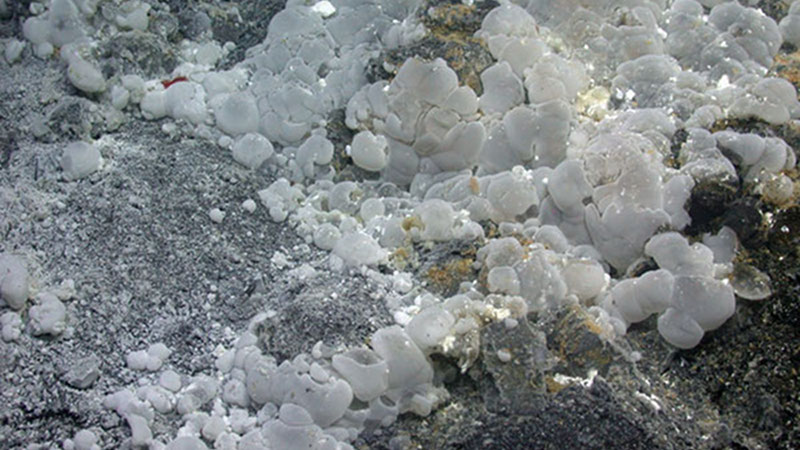
Clusters of what appear to be polysaccharide sacs on the seafloor seen at the beginning of the dive at Volcano O. Image courtesy of MARUM, University of Bremen and NOAA-Pacific Marine Environmental Laboratory. Download larger version (jpg, 2.3 MB).

Clusters of what appear to be polysaccharide sacs on the seafloor seen at the beginning of the dive at Volcano O. Image courtesy of MARUM, University of Bremen and NOAA-Pacific Marine Environmental Laboratory. Download larger version (jpg, 2.3 MB).
The Submarine Ring of Fire 2012 NE Lau Basin exploration team onboard the R/V Roger Revelle explored Volcano O today, one of the largest submarine calderas discovered on Earth to date. Shortly after arrival on the seafloor with the Quest 4000 ROV, we observed what appeared to be rubble held together by gelatinous mats which gave a carpeted appearance to the seafloor. What appeared to be clusters of polysaccharide sacs were also observed. Particulate sulfur formed a fog which was suspended over the seafloor in some areas. The ROV flew over an area on the western flank that appeared to have downward flows of recent molten sulfur. Once reaching the summit of the cone, we observed extremely intense clouds of sulfuric gases venting from the large pit at the top of the cone. Multiple attempts were made to enter the pit with the ROV to identify the source(s) of the sulfuric gases, however, the “smoke” was so thick and widespread that we were unable to locate the potential source(s) before the end of the dive. What was also interesting about this site is that very little macrofauna was observed as compared to previous dives, likely due to the caustic environment at this site.